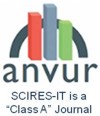Abstract
The article examines visual representations of Euclid’s dodecahedron (Book XIII, Proposition XVII), emphasizing Erhard Ratdolt’s influential 1482 edition, notable for innovative diagrams and clear pedagogical intent. By tracing graphic evolution across key editions, including those by Tartaglia (1560) and Commandino (1572) it explores gradual advances in depicting geometric forms, such as visual hierarchy through varied line thicknesses, color differentiation, and perspective-based constructions. However, widespread adoption of these innovations was significantly delayed by technical constraints of early printing methods, adherence to traditional visual standards, and cautious experimentation. The analysis thus highlights a continuous dialogue between mathematical abstraction, graphic representation, and pedagogical needs.
Keywords
Full Text:
PDFDOI: http://dx.doi.org/10.2423/i22394303v15n1p141
References
Baldasso, R. (2008). La stampa dell’editio princeps degli Elementi di Euclide (Venezia, Erhard Ratdolt, 1482). In L. Pon & C. Kallendorf (Eds.), The Books of Venice (pp. 61–100). New Castle, DE, and Venice, Italy: Oak Knoll Press, Biblioteca Nazionale Marciana, and La Musa Talìa.
Banker, J. R. (2003). The culture of San Sepolcro during the youth of Piero della Francesca. Ann Arbor, MI: University of Michigan Press.
Bernante, A. (2020). L’Euclide di Bartolomeo Zamberti e il Rinascimento della matematica e delle arti a Venezia tra la fine del Quattrocento e l’inizio del Cinquecento (Tesi di laurea magistrale). Università Ca' Foscari Venezia.
Busard, H. L. L. (1984). The Latin Translation of the Arabic Version of Euclid's Elements Commonly Ascribed to Gerard of Cremona Introduction, edition and critical apparatus. Leiden: E. J. Brill.
Byrne, O. (1847). The first six books of the Elements of Euclid: In which coloured diagrams and symbols are used instead of letters for the greater ease of learners. London, UK: William Pickering.
Ciocci, A. (2009). Luca Pacioli tra Piero della Francesca e Leonardo. Sansepolcro, Italia: Aboca.
Ciocci, A. (2020). Luca Pacioli, Leonardo da Vinci e il disegno dei poliedri. In M. Martelli (Ed.), Arte e matematica in Luca Pacioli e Leonardo da Vinci (pp. 43–86). Città di Castello: Edizioni Nuova Prhomos.
Commandino, F. (1572). Euclidis Elementorum libri 15. Unà cum scholijs antiquis. Pesaro, Italia: Camillo Franceschini.
De Young, G. (2004). The Latin translation of Euclid's Elements attributed to Gerard of Cremona in relation to the Arabic transmission. Suhayl. Journal for the History of the Exact and Natural Sciences in Islamic Civilisation, 4, 311–328.
Dürer, A. (1525). Underweysung der Messung mit dem Zirckel und Richtscheyt in Linien, Ebnen unnd gantzen Corporen. Nürnberg, Germania: Hieronymus Andreae.
Fazzini, G. (2003). Luca Pacioli e Venezia. In M. Emmer (Ed.), Matematica e cultura 2003 (pp. 153–158). Milano, Italia: Springer-Verlag Italia.
Gavagna, V. (2009). La tradizione euclidea nel Rinascimento. In F. Commandino (Ed.), De gli Elementi d'Euclide volgarizzati da Federico Commandino (pp. 1–10). Urbino, Italia: Accademia Raffaello. Retrieved from https://www.researchgate.net/publication/296195394
Joost-Gaugier, C. L. (2008). Pitagora e il suo influsso sul pensiero e sull’arte. Roma, Italia: Arkeios.
Kemp, M. (1990). The science of art: Optical themes in Western art from Brunelleschi to Seurat. New Haven, CT: Yale University Press.
Knorr, W. (1989). “La Croix des Mathématiciens”: The Euclidean theory of irrational lines. Bulletin of the American Mathematical Society, 9(1), 41–69.
Lee, E. (2018). Let the diagram speak: Compass arcs and visual auxiliaries in printed diagrams of Euclid’s Elements. Endeavour, 42(2–3), 78–98.
Menge, H., & Heiberg, J. L. (1885). Euclidis Opera Omnia. Lipsia, Germania: In Aedibus B. G. Teubneri. Nenci, E. (1998). Bernardino Baldi. Le vite de’ matematici: Edizione annotata e commentata della parte medievale e rinascimentale. Milano, Italia: Franco Angeli.
Oosterhoff, R. J. (2020). A lathe and the material sphaera: Astronomical technique at the origins of the cosmographical handbook. In M. Valleriani (Ed.), De sphaera of Johannes de Sacrobosco in the early modern period: The authors of the commentaries (pp. 25–52). Cham, Switzerland: Springer. http://dx.doi.org/10.1007/978-3-030-30833-9_2
Pacioli, L. (1509). Divina proportione. Venezia, Italia: Paganino de’ Paganini.
Pagliara, P. N. (1997). Francesco di Benedetto Cereo da Borgo San Sepolcro (Francesco del, di Borgo; Franciscus Burgensis). In Dizionario biografico degli italiani (Vol. 49, pp. 692–696). Roma, Italia: Istituto dell’Enciclopedia Italiana.
Pergola, R. (2009). Ex arabico in latinum: Traduzioni scientifiche e traduttori nell’Occidente medievale. Studi di Glottodidattica, 3(3), 74–105.
Riccardi, P. (1887). Saggio di una bibliografia euclidea. Bologna: Tipografia Gamberini e Parmeggiani. Scolari, M. (2006). Il disegno obliquo: Una storia dell’antiprospettiva. Venezia, Italia: Marsilio.
Vasari, G. (1550). Le vite de’ più eccellenti architetti, pittori, et scultori italiani, da Cimabue insino a’ tempi nostri: Descritte in lingua toscana, da Giorgio Vasari pittore aretino. Con una sua utile & necessaria introduzzione a le arti loro. Firenze, Italia: Lorenzo Torrentino.
Zamberti, B. (1505). Euclidis Megarensis philosophi platonici mathematicarum disciplinarum janitoris. Venezia, Italia: Giovanni Tacuino.
Article Metrics
Metrics powered by PLOS ALM
Refbacks
- There are currently no refbacks.
Copyright (c) 2025 Massimilano Ciammaichella, Chiara Monaco, Luciano Perondi

This work is licensed under a Creative Commons Attribution-NonCommercial-NoDerivatives 4.0 International License.
SCIRES-IT, e-ISSN 2239-4303
Journal founded by Virginia Valzano






